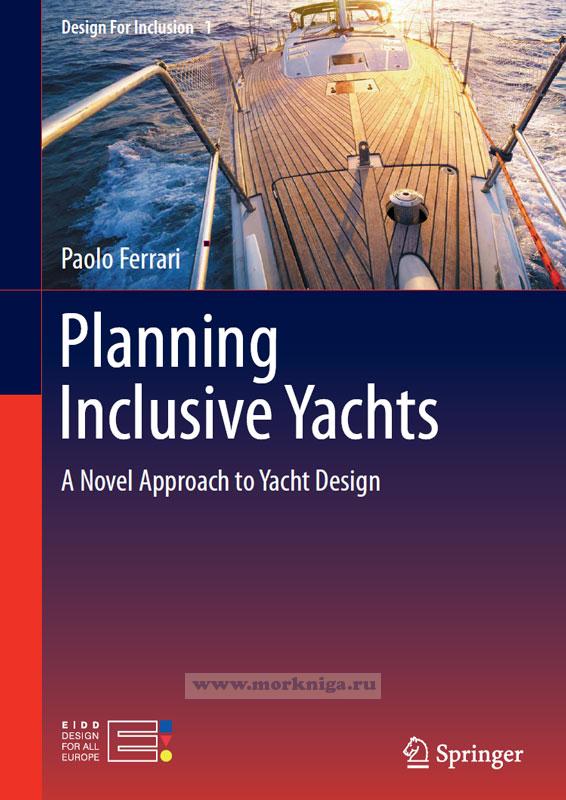Сб с 10 до 16
Planning inclusive yachts. A novel approach to yacht design/Планирование инклюзивных яхт. Новый подход к дизайну яхт
Издание на английском языке
This book indirectly refers to two emerging issues in contemporary society; first, the social theme of inclusion and human diversity, second, the growing awareness that a “standard” human being does not exist.
Contents
1 Why Inclusive Design?
1.1 Dimensions of Motor Disability
1.2 Types of Motor Disability
1.3 Boating in Numbers
1.4 Designing for Inclusion
1.5 Anthropometry and Space Sizing for Users with Reduced Mobility
2 The Inclusive Yachting
2.1 Inclusive Design and Yachting
2.2 The Commitment of Associations and the Birth of a Paralympic Discipline
2.3 The Function of Non-profit Organizations for “Sailtherapy”: The Case of “Spirito Di Stella”
2.4 Sailability and the Concept of “Sailing for Everyone”
2.5 The Experience of Three Disabled Sailors: Andrea Stella, Massimo Dighe and Deborah Mellen
2.6 A Boat Charter Accessible to Disabled People: Technical and Economic Evaluations
3 State-of-the-Art in the Design of Accessible Boats
3.1 Boats Built or Modified from the 80s to Today
3.2 Academic Project Proposals
4 Critical Analysis of Existing Sailing Boats
4.1 Pleasure Sailing Yachts
4.2 Deck and Interior Layouts
4.3 Analysis and Classification of Accessibility Issues: Identification of Cases
5 Guidelines for Access, Movement and Use of Spaces
5.1 Transom
5.2 Boarding Systems
5.3 Systems for Steering the Boat
5.4 Cockpit and Side Walkways
5.5 Companionway Hatch and Accessibility Below Deck
5.6 Below Deck Spaces
5.7 Bathing Systems
6 Design Proposals for Accessible and Inclusive Boats
6.1 Experimental Concept Design of a 28-foot (8.53 mt)
6.2 Experimental Concept Design of a 33-foot (10.05 mt)
6.3 Experimental Concept Design of a 45-foot (13.71 mt)
6.4 Experimental Concept Design of a 77-foot (23.47 mt)
Conclusions
Epilogue
Bibliography
Websites

